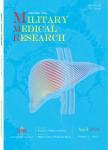Efficient and rapid conversion of human astrocytes and ALS mouse model spinal cord astrocytes into motor neuron-like cells by defined small molecules
Efficient and rapid conversion of human astrocytes and ALS mouse model spinal cord astrocytes into motor neuron-like cells by defined small molecules作者机构:Tianjin Medical UniversityTianjin 300070China Research Center for Tissue Repair and Regeneration Affiliated to the Medical Innovation Research Division and 4th Medical CenterPLA General Hospital and PLA Medical College28 Fu Xing RoadHaidian DistrictBeijing 100853China PLA Key Laboratory of Tissue Repair and Regenerative Medicine and Beijing Key Research Laboratory of Skin InjuryRepair and RegenerationBeijing 100048China Research Unit of Trauma CareTissue Repair and RegenerationChinese Academy of Medical SciencesBeijing 100048China
出 版 物:《Military Medical Research》 (军事医学研究(英文版))
年 卷 期:2021年第8卷第1期
页 面:62-78页
核心收录:
学科分类:0710[理学-生物学] 1002[医学-临床医学] 07[理学] 071006[理学-神经生物学]
基 金:supported in part by the National Nature Science Foundation of China (81830064, 81721092) the National Key Research and Development Plan (2017YFC1103304) the CAMS Innovation Fund for Medical Sciences (CIFMS, 2019-I2M-5-059) the Military Medical Research and Development Projects (AWS17J005, 2019–126)
主 题:Human astrocyte Motor neuron Reprogramming Transdifferentiation Conversion Regeneration Amyotrophic lateral sclerosis Neurodegenerative
摘 要:Background: Motor neuron degeneration or loss in the spinal cord is the characteristic phenotype of motor neuron diseases or spinal cord injuries. Being proliferative and located near neurons, astrocytes are considered ideal cell sources for regenerating ***: We selected and tested different combinations of the small molecules for inducing the conversion of human and mouse astrocytes into neurons. Microscopic imaging and immunocytochemistry analyses were used to characterize the morphology and phenotype of the induced neurons while RT-q PCR was utilized to analyze changes in gene expression. In addition, whole-cell patch-clamp recordings were measured to examine the electrophysiological properties of induced ***: The results showed that human astrocytes could be rapidly and efficiently converted into motor neuronlike cells by treatment with defined small molecules, with a yield of over 85% motor neuron-like cells attained. The induced motor neuron-like cells expressed the pan-neuronal markers TUJ1, MAP2, Neu N, and Synapsin 1 and motor neuron markers HB9, ISL1, CHAT, and VACh T. During the conversion process, the cells did not pass through a proliferative neural progenitor cell intermediate. The induced motor neurons were functional, showing the electrophysiological properties of neurons. The same chemical cocktail could induce spinal cord astrocytes from an amyotrophic lateral sclerosis mouse model carrying a SOD1 mutation to become motor neuron-like cells that exhibited a decrease in cell survival and an increase in oxidative stress compared to that observed in wild-type MNs derived from healthy mice. Moreover, the chemical induction reduced oxidative stress in the mutant ***: The results of the present study demonstrated the feasibility of chemically converting human and mouse astrocytes into motor neuron-like cells that are useful for neurodegenerative disease modeling and regenerative medicine.



